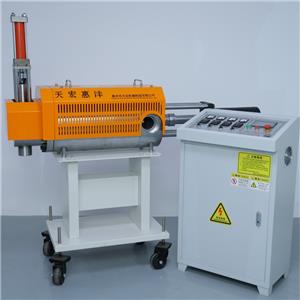One of the paths of green development of plastic packaging: Degradable plastic packaging
According to big data statistics, in recent years, the average annual growth rate of degradable plastics is about 45%, and the large-scale use of degradable plastic packaging also has three difficulties.
First, it is difficult to establish a separate recycling system. The disposal of degradable plastics requires the establishment of a separate recycling system, which is extremely difficult. China has not yet completed the task of garbage classification, so it is very difficult for residents to distinguish between degradable plastics and ordinary plastics. At present, degradable plastics are mainly incinerated and landfilled like traditional plastics, accounting for more than 97%.
The second is the need for composting. In industrial compost, the required conditions are usually high temperature (55 to 60 degrees Celsius) and high humidity, and it takes more than 3 months to decompose and digest it with bacteria or fungi. However, there are only more than 100 food waste composting plants in China, and food waste can be decomposed and digested in two weeks, regardless of time and space, it can not meet the demand. Land-based degradable plastics degrade very slowly in the sea, PLA (polylactic acid), PBAT (copolymer of butylene adipate and butylene terephthalate) and so on are basically not degraded, and there is a problem of uncontrolled waste in large-scale use. Although PGA (polyethyl ester) and PHA (polyhydroxyfatty acid ester) can be degraded in seawater, the degradation process needs to be evaluated in real environment.
Is limited in use scenarios. One is the field of high cost of recycled plastics, packaging bags, lunch boxes, straws, mulch and other general fields, the amount is large and extensive, mainly using PBAT, PLA materials, due to its large surface area, and other garbage separation difficulties, cleaning and processing difficulties. The processing cost is almost 2 to 3 times the cost of buying new products, and the economic value of recycling is very low. The other is the field of low plastic performance requirements. Not all membranes can be replaced with degradable plastics. For example, many food packaging needs high temperature resistance, low temperature resistance, light resistance, oxygen resistance, water resistance, oil resistance. The current performance of degradable plastics does not meet the requirements of these areas. Although there are also applications in high-end fields such as medical treatment and 3D printing, the demand is limited, mainly using PGA, PLA and other materials.
In order to solve these difficulties, improvements include the development of non-compost degradable plastics. If you do not use compost, it can be degraded in the natural environment, such as natural degradation in the fields, rivers, and oceans, which will greatly promote the development of degradable plastics.
The demand space for degradable plastics is closely related to policy implementation. In 2022, the global market demand for degradable plastics is 500,000 tons, and it is expected to reach 2.5 million tons in 2025, with an average annual growth rate of about 45%. Packaging is still the largest application area, PBAT occupy the mainstream, PLA ranked second, is expected to 2025 PBAT demand will reach 1.5 million tons, PLA 750,000 tons, PGA, PHA and other applications in specific areas, the demand is low. The geographical distribution presents a tripartite situation of Asia, Europe and the United States. With the release of China's production capacity, the market size of degradable plastics in Asia will rise from 30% to 45% in 2025, Europe will pay attention to the demand for plastic recycling, the proportion will fall from 35% to 20%, and the demand in North America will be stable at 30%. As of the first half of 2023, the effective production capacity of degradable plastics in China is 1.62 million tons/year, mainly PBAT and PLA production capacity, and the planned production capacity in 2025 exceeds 12 million tons/year, involving more than 50 enterprises, of which PBAT production capacity planning accounts for the largest proportion, but more than 80% of production capacity is in the paper planning stage. In 2022, China's degradable plastic consumption of 380,000 tons, if the policy is implemented in place, it is expected that the consumption of degradable plastics in 2030 to 2035 will reach 4 million tons, effectively promoting the green development of the packaging industry.




